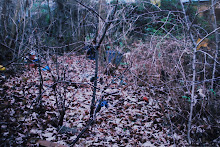‘Live art development agency offers a portfolio of resource, professional development schemes, and projects and initiatives for the support and development of live art practices and discourses in London, the uk and internationally. The agency is committed to working strategically, in partnership, and consultation with artist and organisations in the cultural sector.’
(Statement taken from live Art Development Agency leaflet)
I gained a lot from the visit to the Live Art Development agency. The first was realising the support available for artist working in the live art sector. Sessions can be booked for one on one advice, artistic development schemes are available and loads of other things that help you on your way (I didn’t really know these places existed). And the study room with its vast number of resources of Live Art related publications including: DVDs, videos, cd-roms, magazines and journals. It’s an amazing place to go for research and to explore new artist and to explore the huge range of ways you can document your work.
I have never really fully considered how I document my performances. Just used the normal ways of recording a moment: photos, film, and objects/relics that were used in the performance. But the discussion we had on Monday opened my eyes to how carefully I must consider the ways I document my work. This becomes the trace that is left of that moment. This becomes a record of your work and its what you are left with as an artist.
The thing to do is document your work in as much ways as possible, video, photo, sound recording, writing about it, drawings, relics, objects. Then you have a choice afterward and lots of material to work with. Every little detail must be considered, as the person that is viewing the work will read into everything.
Quality of the work is important. Printing off a few pictures on a bit of old paper is not enough. These things have to be considered as they all add and take away from how your work is portrayed.
You can control the documentation of you work. The performance could have been shit, but the pictures could make it look incredible. Does is have to tell the truth? No.
So now I have to consider all these things when I make a documentation of our spur of the moment performances at Tate. (Pictures shown a few posts below) this is a challenge because they were quick and we were in a very controlled environment (the Tate has a lot of rules, no filming, no pictures etc) so I could only document it using a phone camera.
Perhaps in this case the rubbish quality adds to the images, Colours are intensified and images are grainy.
A book/ leaflet could be an interesting way to document these. Perhaps with diagrams of the poses I am mirroring. So the viewer could also pose in this way. Adding another layer to the work and making it interactive?
Sunday, 9 November 2008
Subscribe to:
Post Comments (Atom)

No comments:
Post a Comment